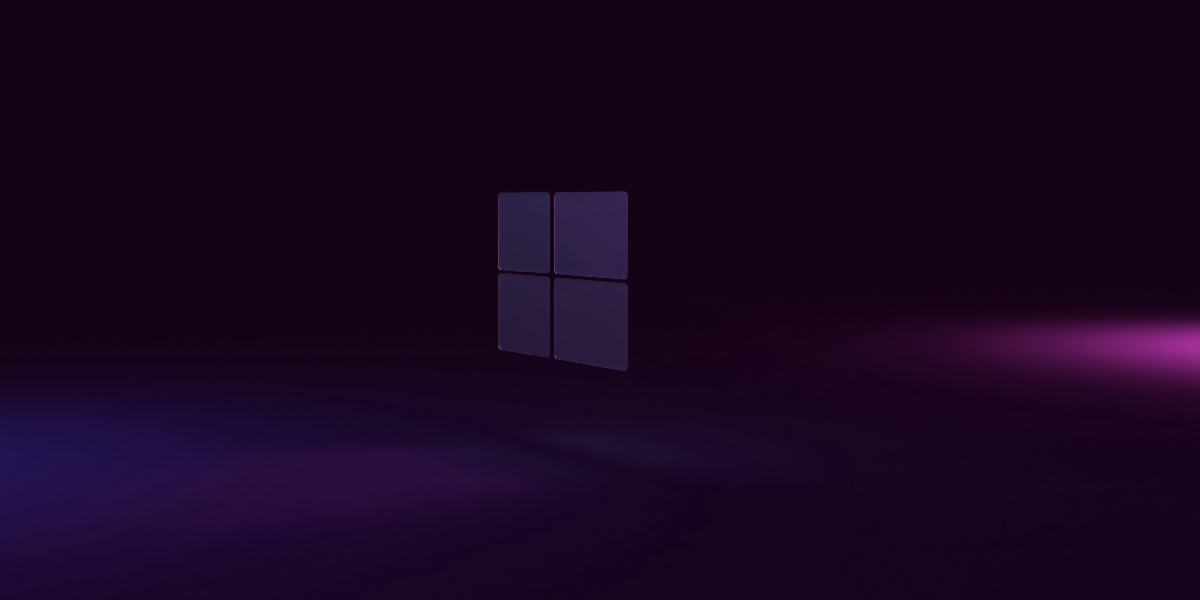Tech
Technology and God: How We Can Make It Work towards Our Needs and Reconnect with God
Published
4 years agoon
By
David Smith
Our phones, which have an immediate internet connection (for the most part), provide us quick access to the rest of the world. And yet, we risk losing at least four other senses by focusing only on the world around us. The more we rely on our smartphones, the more we lose out on genuine relationships that are all around us. So how technology may assist us in improving our connection with the Almighty? Christians may use social media, blogs, and Twitter to preach the gospel more effectively with the aid of technology.
Christians may now utilise social media, blogs, and Twitter to assist preach the message via technology.
The allure of modern technology also carries a risk. Although we may miss out on individuals in our immediate surroundings, we also run the danger of forgetting to connect with them on a deeper level. Making relationships with God is critical if we wish to experience serenity and overcome the stresses of everyday life.
In the highlands, where Jesus often rests and communes with God, even his closest disciples must search for him. We may find balance, direction, and purpose in our life when we connect deeply with others. It also recharges us for the remainder of the day.
As a result, what exactly do we do when we find ourselves alone by ourselves? Is it possible that Jesus had a smartphone at the time? During his mountain hike, would he first check his social media accounts (Facebook and others) before returning to the group since the day was nearly over without him?
No, Of course, he wouldn’t. That said, when left to our own devices, we run the danger of doing something stupid like this. However, rather than seeking a meaningful connection, we frequently settle for the superficiality of a world that is readily accessible. Wi-Fi is a fast-food connection, and we’re designed to eat better than that.
Five methods to remain connected to God in the digital era are outlined in this article, so read on to learn more. Everything is covered, from utilising technology to get more in tune with our spiritual selves to delving further into our need for likes.
To Begin With
The printing press, of course, was the first major technical advance to have a significant impact on the spread of religion (and knowledge in general). For centuries before moveable type, papers could only be copied manually, a time-consuming task that only the most skilled could do with any regularity.
Because the written word was not as widely available now, most of the population was illiterate. Because religious leaders were responsible for reading and interpreting texts for their flock, the only way to worship was to go to planned services. a master’s in divinity via distance learning
After written books were more easily reproduced, literacy rates increased, and individuals and small groups could study the Christian religion independently. Religions started to diversify and become more personal as new interpretations of beliefs emerged.
Roots Music On The Radio
The radio was invented in the twenties, and the rural population of the United States began to decrease. Radio made it possible for those living in remote regions to remain in touch with the rest of the country and with their religious beliefs.
On January 2nd, 1921, Pittsburgh Calvary Episcopal Church aired the first religious radio programme. Some religious leaders, such as pastors and orators, initially thought radio and television were pointless, if not downright wicked. Despite this, the number of Christian radio stations increased from 29 in 1924 to 71 in 1925.
Aimee Semple McPherson rose to national prominence due to her work on Christian radio, which has its origins in the church’s historical paradigm. It was she who started the megachurch trend, which is still growing in popularity today.
It was estimated that almost half of all American households had a radio in them by the end of the decade. No matter where they were, people in the United States felt that they belonged to a community. Religious broadcasting was deemed a public benefit during the Great Depression, so those seeking communion had little trouble finding it.
However, as radio stations tried to broaden their appeal, the content of their sermons also widened. These trends would last far into the golden era of television.
The Power Of Television
Tent-revival preaching had a comeback during the Great Depression in the Midwest and the South. Tv did not become widely used until after World War II, but Evangelical churches were the primary target audience for religious television. Thanks to modern media, pastors, preachers and other religious leaders may now reach a larger audience more engagingly.
Religious radio personalities started transitioning to television in the early days. A popular radio broadcaster for two decades, Fulton J. Sheen was dubbed “the original televangelist” by Time magazine. Another Christian radio personality, Rex Humbard, was the first to broadcast a weekly service in 1952.
There was a lot of confusion about televangelists’ financial methods. Many claimed that their riches resulted from God’s will for them, which many Christians find to oppose the traditional gospel. In addition, televangelists became engaged in politics, which led to a mix-up of politics and religion in the pulpit among church leaders.
The Internet Of Religion
When it comes to the state of organised religion, the Internet has been both a gift and a disaster. On the one hand, the Internet enables Christians to customise their spiritual journey further via personalisation and choice.
The Internet is the pinnacle of information dissemination because it allows people to curate that content as they see fit. Thoughtful films and articles on science, collections of out-of-date ideas, and groups that encourage people who reject religion and spiritualism are eroding the faith of the nation’s adherents.
However, for believers, the Internet isn’t all terrible. It’s how you utilize a tool, like any other tool, that determines the final result. Christians may remain in contact with their congregations no matter where they are, thanks to such things as podcasts, simulcast services, Christian message boards and mailing lists. Pastors and religious leaders now have access to a wealth of new materials thanks to the Internet. The Internet has a lot to offer religious leaders and congregations, from theology degrees to sermon generators.
Religion will evolve in lockstep with the latest technological advancements. No matter what happens in the future, believers will continue to discover new and creative methods to study and deepen their religion.
The Use Of Modern Technology Makes It Possible For Us To Spread The Gospel To Others
As a result of technological advancements, there are more opportunities than ever to spread the gospel. We can now build websites like Bible Reasons, thanks to progress in technology. We may communicate our religion through blog postings, radio, Facebook, Twitter, television, and YouTube, among other mediums.
We must also keep in mind that using technology does not imply placing our faith in it. In the end, we’re counting on the Holy Spirit to finish the job He’s started. Social media has been a powerful tool for God in reaching millions of people and transforming lives across the globe. The next time you’re browsing the Internet, look up a Bible passage and wonder, “Is God speaking to me via this verse?” God communicates with His people in a variety of ways.
Technology Has The Potential To Assist In Increasing The Number Of Individuals That Visit Your Church
For Christians, regular attendance at church and discipleship are critical. Perhaps technology can be used to assist those seeking a spiritual home in finding one via the Internet. Starting a church YouTube channel is one method to accomplish this. Many individuals look for church services in their area on the Internet.
You may urge folks to visit your church by posting on your social media platforms or YouTube channel. You may also utilize a variety of internet ways to get people to join your community groups and take part in them.
Technology Makes It Possible For Us To Connect With Individuals All Around The Globe
With the help of various coolest USB gadgets and video conferencing applications like Zoom, Google Meet, GoToMeeting, and Google Hangouts, we can meet with people from all over the globe without having to travel. It’s easier than ever before for people in places like India, the U.S., Africa, and England to communicate. To pray and worship together, video conferencing applications are fantastic.
Verse 19 and 20 of the Gospel of Matthew If two people on earth agree on whatever they ask for, my Father in heaven will make it happen for them. Wherever two or three get together, I’ll be among them.
Group Bible studies are also possible, even if you’re in another country or state. We now can share what we’ve learned, inspire others, and provide advice to people in our community and across the globe. Utilize this opportunity and see if we can’t assist others while also being benefited by technology.
You Can Stay In Touch With Your Church Even If You’re Not There On Sundays, Thanks To Technology
When someone turns into a Sunday Christian, it’s one of the most harmful things about Christianity. They attend church on Sundays, but the rest of the week is devoid of any mention of God until the following Sunday.
You can both teach your congregation and keep them engaged throughout the week by having a church app. You may inspire people to read the Bible and pray using a church app or even a newsletter. Before the service on Sunday, you may send them home with Bible study materials.
You’ll have no problem staying in touch with the members of your church. You may also email your congregation the most recent information and updates from your church.
We’re more mobile than ever before, thanks to technological advancements. Don’t underestimate the positive impact an app may have on your church’s membership. Instead of waiting until tomorrow to start developing a church app, get started now.
Use Of A Computer And Digital Projector
We tend to forget about this crucial element of technology. Using projectors to show Bible passages, songs, videos, and more in churches is a good idea. A projector makes it simple to show any statement your church wishes to make. Why not make your sermons and information more visually appealing?
People Who Find It Difficult To Interact With Others May Now Do So Thanks To Technological Advancements
Many individuals want to attend church but cannot do so because they are either afraid or embarrassed. For some individuals, particularly introverts, going to church may be a frightening experience. Covid-19 had the effect of making churches broadcast for a short period. What’s great about this is that many individuals who were on the fence about going to church could do so through live streams.
Ending Thoughts
It’s not necessary to be pessimistic while discussing technology. Medical advances and increased worldwide connectivity are just a few examples of how technology has influenced our society for the better. Christians who desire to improve their quality of life, religion, and relationships will find a lot to like in it. Even if you are a practising Christian, technology may be a valuable aid in your walk with God.
When it comes to studying the Bible, Christians, for example, have unprecedented access to materials. To get the most out of a Bible reading, check on various translations, definitions, and comments. You may also benefit from the Internet by listening to inspiring sermons or podcasts. Even though many churches provide live streaming options, Cornerstone is one of them.
Modern technology is helpful to Christians in more ways than simply Christian materials. The Internet and texting’s immediate communication capabilities can keep us in touch with the people we care about, even while we’re miles apart. We may pick up the phone and send a message of support to someone we believe needs it right now. When a prayer request comes up, we may notify our pastor or trusted friends through email.
You may like

Microsoft’s Windows is the cornerstone of personal computing – a platform billions rely on daily. In October 2021, Windows 11 debuted as the boldest Windows upgrade in years, boasting a modern interface, tighter hardware requirements, and features that reimagine productivity, gaming, and security.
This comprehensive guide—reflecting insights in “https://seguridadinformaticahoy.com/todo-sobre-windows-11”—dives into every facet of Windows 11: from its core design and feature set to performance improvements, tips, and potential caveats. Whether you’re a home user, gamer, or enterprise IT pro, you’ll gain a deep understanding of what Windows 11 truly delivers.
What’s New in Windows 11
Windows 11 is more than a minor facelift—it’s built on fresh aesthetics, AI elements, and next-gen hardware integration. Here’s what stands out:
-
Centered Start Menu & Taskbar: A macOS-inspired design with revamped icons and a centered layout that balances minimalism and efficiency.
-
Widgets: Reimagined widgets panel offering news, calendar, weather, and productivity insights at a glance.
-
Snap Layouts & Groups: Effortless window arrangement and group recall—great for multitasking and workflows.
-
Microsoft Teams Integration: A built-in Teams Chat accessible via the Taskbar.
-
Android App Support: Users can install Android apps via the Amazon Appstore (currently via beta).
-
Gaming Features: Auto HDR, DirectStorage, and optimized graphics performance.
-
Improved Windowing: Focused on sleek transitions, rounded corners, and taskbar enhancements.
All these updates are fully explained in “https://seguridadinformaticahoy.com/todo-sobre-windows-11,” which highlights Microsoft’s goal: reinvent usability while aligning with modern hardware trends.
System Requirements & Installation Guide
Minimum Requirements
To run Windows 11, your system must meet:
-
CPU: 1 GHz or faster, 2+ cores, 64-bit, on approved list
-
RAM: 4 GB
-
Storage: 64 GB
-
Firmware: UEFI, Secure Boot capability
-
TPM: Trusted Platform Module (TPM 2.0)
-
Display: 9” or larger, HD (720p), 8 bits/channel
-
Graphics: DirectX 12 / WDDM 2.x compatible
-
Internet: Microsoft Account + internet required for Home editions
TPM 2.0 proves essential and has sparked controversy with legacy machines being left out. But it’s a cornerstone for upgraded security.
How to Check Compatibility
-
PC Health Check App: Official tool from Microsoft.
-
Third-Party Tools: Utilities like WhyNotWin11 offer breakdowns.
-
BIOS Settings: Enable TPM, Secure Boot, virtualization.
Upgrade vs. Clean Install
-
In-Place Upgrade: Keeps your files/settings; easiest route for current Windows 10 users.
-
Clean Install: Fresh start; ideal for reclaimed SSDs or wiping malware. Use the official Media Creation Tool or ISO.
Step-by-Step Clean Install
-
Backup files with OneDrive, external drive, or clone tools.
-
Download Media Creation Tool from Microsoft.
-
Create Bootable USB (8 GB min).
-
Enable Secure Boot & TPM 2.0 in UEFI.
-
Boot from USB and install.
-
Sign in with Microsoft Account.
-
Personalize & activate updates/apps.
Don’t skip updates—they often fix teething issues for new adopters.
Redesigned Interface and User Experience
Aesthetic Refresh
Windows 11 introduces:
-
Centered Start & Taskbar with floating windows and rounded corners.
-
New system icons for modern consistency.
-
Transparent Acrylic taskbar, enhancing design depth.
-
Light/Dark Themes: Sync across elements and support dynamic desktop changes.
Start Menu & Search
-
Simplified layout: Pinned apps show front-and-center; recent files dynamically appear.
-
Universal Search integrates local files, apps, and web results.
Snap Layouts, Groups & Desktops
Hover over maximize to access Snap Layouts:
-
Choose layout templates or create your own multi-window setups.
-
Snap Groups let you toggle full multi-app workflows.
-
Virtual Desktops are now customizable with distinct wallpapers.
Widgets Panel
-
Find widgets with Taskbar toggle; personalize news, tasks, weather, and stock info.
-
Built-in Widgets API allows third-party extension over time.
Taskbar & Quick Settings
-
Unified pull-downs for Wi-Fi, volume, battery, and alerts.
-
Notifications appear grouped with an option to clear all in one go.
Productivity Features & Workflows
Microsoft Teams Chat
Integrated in Taskbar:
-
One-click start for personal chat, calls, or screen sharing.
-
Individual chat flow, not the full Teams interface—useful for quick communication.
Focus Sessions & Clock/Pomodoro
-
Set timers, link Spotify, and enable Do Not Disturb.
-
Motivation built in—great for structured work bursts.
Content-Aware Snipping & Screen Recording
-
Snipping Tool and Snag It alternatives are now native.
-
Clips from the xbox Game Bar support both gaming and productivity scenarios.
Voice Typing & Windows Dictation
-
Powered by cloud AI: improved accuracy and punctuation.
-
Rich voice commands for tasks like “delete that sentence.”
Context Menus & File Explorer
-
Simplified right-click options; advanced options hidden under “Show more.”
-
New command bar for File Explorer provides clarity and easier navigation.
Gaming on Windows 11
Microsoft’s PC gaming leap with Windows 11 is substantial:
Auto HDR
Adds high-dynamic-range color to DirectX 11+ games automatically, even non-HDR titles.
DirectStorage
Drastically increases data throughput, leading to faster load times on NVMe drives.
Xbox App & Game Pass
Now native to Taskbar, connecting you to online gaming, social, and streaming.
Unified Game Bar
Overlay for real-time FPS, recording, chat, and performance overlays.
Gamers benefit from more responsive gameplay and immersive visuals.
Security Enhancements
Security underpins Windows 11’s design:
TPM 2.0 & Secure Boot
Foundation for hardware-based encryption, key protection, and system integrity.
Windows Hello & Modern Authentication
Password-free login: facial recognition, fingerprint, and PIN sign-in.
Enhanced Hardware-Assisted Security
VBS (Virtualization-Based Security) and HVCI (Hypervisor-Enforced Code Integrity) are now enabled by default on capable hardware.
Smart App Control
AI-driven tool allowed only signed and trusted apps—blocks malware, office threats. Initially in preview, expanding via updates.
Microsoft Defender Updates
Security core UI redesigned, faster scans, enhanced phishing and ransomware guardrails.
App Ecosystem & Microsoft Store
Store Revamp
Revitalized UI boosts discoverability, faster load, and rich previews.
Broadened App Support
Win32, UWP, PWAs, and unpackaged store apps all available—more inclusive than before.
Android App Preview
Currently in beta via Amazon Appstore and Windows Subsystem for Android:
-
Install popular apps like TikTok, Kindle, and Zoom.
-
Performance still maturing, but early feedback is promising.
Progressive Web Apps (PWAs)
Installable via Edge with offline capabilities—great for frequent web tools.
Tips, Tricks, and Customization
Maximize your Windows 11 experience:
1. Rename Snap Layouts
-
Use
Win + Z, drag windows. -
Customize by dragging and positioning.
2. Create Virtual Desktop Workflows
-
Rename desktops (Work, School, Play).
-
Assign apps to desktops via right-click in Task Manager.
3. Use Focus Sessions
-
Access via Clock app—great for concentration.
-
Adds structure and syncing with Outlook.
4. Enable Smart App Control
-
Found in Settings → Privacy & Security.
5. Turbocharge Performance
-
Use Game Mode, Graphics Performance Preferences, and power plans.
-
Use Task Manager’s “Startup” tab to trim bloatware.
6. Customize the Taskbar
-
Drag items, sliver icons off, and anchor Widgets or Chat.
7. Use New File Explorer Shortcuts
-
Win + Efor Explorer, context switch via shortcut or command bar.
8. Animate with Voice Access
-
Controls like “Open Edge, Scroll down 3 pages, Click link” are fully supported.
9. Harness Whatsapp Web via PWA
-
Install from Edge—gives near-native desktop usability.
10. Tweak Touch & Pen Settings
-
Pen gestures, handwriting recognition, gestures via Settings → Bluetooth & devices.
Common Issues and Troubleshooting
Boot or Blue Screen on Unsupported Hardware
-
TPM 2.0 or Secure Boot issues: check BIOS, or choose Clean Install via ISO.
-
For older CPUs: bypass flag in registry during install—but not recommended for mainstream use.
Battery Drain & Performance Issues
-
AV scans, telemetry, and indexing increase workload.
-
Switch to Balanced or Power saver, disable telemetry via Group Policy.
Broken Audio or Display Drivers
-
Use Intel’s DCH drivers, latest AMD/NVIDIA Game Ready or Studio drivers.
Android App Not Working?
-
Ensure Windows Subsystem for Android is installed and in preview, and enable virtualization.
Taskbar or Widgets Broken
-
Run
sfc /scannow, reinstall stock apps via PowerShell (“Get-AppxPackage…”).
Snap Layout Stuck?
-
Re-enable Snap Assist in Settings → System → Multitasking.
FAQs
Is Windows 11 a free upgrade?
Yes—if you’re on licensed Windows 10 with hardware support, Microsoft offers a free upgrade via Windows Update.
Can I revert to Windows 10?
Yes, within 10 days of upgrade. Settings → System → Recovery → Roll back.
Why do I need TPM 2.0?
It secures keys and system integrity; foundational for modern ransomware resistance.
Are all Windows 10 apps compatible?
Over 99% install and run fine. Only a few low-level tool conflicts—mostly edge cases.
Do I need a Microsoft account?
Home edition requires it. Enterprise/LTSC allows local accounts.
Personalization tied to account access.
Conclusion
Windows 11 stands out not just in design, but in performance, security, and flexibility. Whether for daily tasks, creative workflows, or immersive gaming, its refreshed UI, productivity enhancements, and robust security make it compelling.
From rounded corners and centered Taskbar to Auto HDR and Smart App Control, it brings modern polish across the board. TPM 2.0 and VBS keep your system protected against modern threats. Android app support and progressive web apps broaden your software horizons.
Tech
Top 3 Advanced Persistent Threats and How Businesses Can Stop their Attacks
Published
3 months agoon
April 24, 2025By
admin
Businesses of various sizes and fields are susceptible to advanced persistent threats (APTs). According to the cybersecurity company ANY.RUN, in the first quarter of 2025 the most active phishing groups were Storm1747, TA569, and Storm1575. isn’t limited to, finance, media, and cybersecurity.
To protect the infrastructure of your organization, learn about their tactics and weak spots below.
Storm1747 – detected 16,140 times in January–March 2025
Storm1747 is a cybercriminal group responsible for the Tycoon 2FA phishing kit. It’s known to evade detection systems by using malicious QR codes. Still, such attacks don’t go unnoticed. The adversaries leave traces, and they can be identified.
To retrieve information on them and protect your company, use threat intelligence services. Here’s how to investigate threats in ANY.RUN’s TI Lookup, a constantly updated searchable database of IOCs, IOAs, and IOBs of the most recent attacks:
1.Enter the query
TI Lookup allows you to conduct compound searches. For example, let’s browse its database to look for threats flagged as Storm1747 and involving QR codes by entering this query:
threatName:”storm1747″ AND threatName:”qrcode”

In TI Lookup, you can form compound searches with any of over 40 available parameters
Explore current cyber threats with 50 trial requests in TI Lookup
2.See the results
Now we can see a list of all freshly gathered threat samples that fit our requirements:

The list of threat samples that fit our query
3.Collect actionable intel to enrich your defense
Each contains an in-depth threat context. By clicking any of the search results, you can continue the analysis in ANY.RUN’s Interactive Sandbox for malware analysis to collect detailed info on each threat and interact with malicious files safely to understand their behavior:

Interact with malware for further analysis in ANY.RUN’s Sandbox
That’s how you can analyze recent attacks, collect their indicators, and take measures to protect your company from upcoming threats associated with them.
TA569 – detected 1,005 times in January–March 2025
TA569 is a threat actor responsible for the SocGholish malware injected into compromised websites via malicious JavaScript.
With this simple search query in TI Lookup, we can find our which domains fell victim to SocGholish:
threatName:”socgholish” AND domainName:””

Search results for domains associated with the SocGholish
You can also subscribe to this or any other query via the Search Updates feature to keep track of the threats as they evolve. In this case, information on fresh attacks will appear on your dashboard highlighted in green.

Search Updates in TI Lookup allow you to track evolving threats
Storm1575 – detected 762 times in January–March 2025
TI Lookup allows you to check if an indicator has anything to do with a threat. For instance, you would like to find out whether a website is related to malicious activities. All you have to do is to browse the database for its mentions using a query like that:
domainName:”castirontexas[.]com”
And in a moment’s time, you’ll know that this website is associated with Storm1575, one of the leading recent cyber criminal groups. It’s known to conduct attacks targeting companies globally via the Dadsec platform.

The website we checked is associated with malicious activities
Try TI Lookup to Enrich Alerts and Speed up Incident Response
TI Lookup’s searchable database provides you with the most up-to-date information on the latest cyber threats and enables business and organizations to:
- Detect and identify attacks before they cause damage
- Investigate and browse IOCs, IOAs, and IOBs for more insights on threat actors
- Enhance the efficiency of your security team’s workflow
- Gain access to data that helps take proactive action against cyber threats
Over 500,000 security professionals worldwide, including SOC teams from 15,000 companies, contribute to ANY.RUN’s database, keeping it relevant and abundant.
Tech
How Accurate Pulley Alignment Can Prevent Equipment Failures
Published
3 months agoon
April 22, 2025By
admin
In industrial settings, the smooth operation of machinery is essential for productivity and safety. One often overlooked aspect that can significantly impact machinery performance is pulley alignment. Proper alignment of pulleys ensures that belts run smoothly, reducing wear and tear on equipment components and minimizing the risk of costly breakdowns. In this article, we’ll explore the importance of accurate pulley alignment and how it can prevent equipment failures.
Understanding Pulley Alignment
Pulleys are critical components in various types of machinery, including conveyor systems, pumps, and motors. They transmit power from one rotating shaft to another via belts or chains. When pulleys are misaligned, even slightly, it can lead to a range of problems, including increased friction, excessive vibration, and premature wear on belts and bearings.
Common Causes of Misalignment
Several factors can contribute to pulley misalignment, including:
- Installation Errors: Improper installation of pulleys or shafts can result in misalignment from the start.
- Belt Tension: Inadequate or uneven belt tension can cause pulleys to shift out of alignment over time.
- Shaft Deflection: Shaft deflection due to excessive loads or improper support can lead to misalignment issues.
- Thermal Expansion: Temperature fluctuations within the machinery can cause components to expand or contract, affecting pulley alignment.
Impact of Misalignment on Equipment
Misaligned pulleys can have significant consequences for machinery and production processes, including:
- Increased Wear and Tear: Misalignment causes excessive friction, leading to accelerated wear on belts, bearings, and other components.
- Reduced Efficiency: Machinery operates less efficiently when pulleys are misaligned, resulting in higher energy consumption and reduced productivity.
- Vibration and Noise: Misalignment often results in excessive vibration and noise, which can be disruptive and potentially harmful to equipment and personnel.
Preventive Measures
Preventing pulley misalignment is key to maintaining equipment reliability and prolonging service life. Here are some preventive measures to consider:
- Regular Inspection: Conduct routine inspections of pulley alignment using precision tools such as a laser alignment tool. Identify and correct misalignment issues promptly.
- Proper Installation: Ensure that pulleys and shafts are installed correctly according to manufacturer guidelines to minimize the risk of misalignment from the outset.
- Belt Tensioning: Maintain proper belt tension to prevent slippage and minimize the likelihood of pulley misalignment.
- Temperature Monitoring: Monitor temperature fluctuations within the machinery and take measures to minimize thermal expansion effects on pulley alignment.
Importance of Laser Alignment Tools
Laser alignment tools are invaluable for achieving precise pulley alignment. These advanced devices use laser technology to measure and adjust the position of pulleys with unparalleled accuracy. By providing real-time feedback and visual guidance, laser alignment tools enable operators to achieve optimal alignment quickly and efficiently.
Conclusion
In conclusion, accurate pulley alignment is crucial for preventing equipment failures and ensuring the smooth operation of industrial machinery. By addressing misalignment issues proactively and utilizing advanced tools such as laser alignment tools, manufacturers can minimize downtime, reduce maintenance costs, and enhance overall productivity. Investing in proper pulley alignment practices is a wise decision that pays dividends in the form of improved equipment reliability and performance.
Remember, maintaining optimal pulley alignment is not just a matter of efficiency—it’s a fundamental aspect of ensuring the safety and longevity of industrial equipment.

The Ultimate Guide to the Best Android Strategy Games in 2025: What to Play and Why

What Are the Most Effective Digital Marketing Strategies?

Everything You Need to Know About Windows 11

The Best E commerce Platforms for Small Businesses in 2025

How to Start Coding from Zero Level with No Prior Experience

Why Great Output Doesn’t Always Mean Great Performance

Top 3 Advanced Persistent Threats and How Businesses Can Stop their Attacks

14 Actionable Tips to Improve Your Manufacturing Business

10 Tips for Optimizing Images for SEO

10 Most Profitable Businesses in India
Trending
-

 Miscellaneous3 years ago
Miscellaneous3 years agoSubnautica Below Zero Map – Know About Complete World Map and Coordinates 2021
-

 Mobile2 years ago
Mobile2 years agoVivo Company Belongs to Which Country? Vivo Made in Which Country? Is Vivo Chinese Company?
-

 Gaming2 years ago
Gaming2 years agoWhen Did the PS4 Come Out
-

 Gaming3 years ago
Gaming3 years agoWhy F95 Zone is the Leading Gaming Community?

